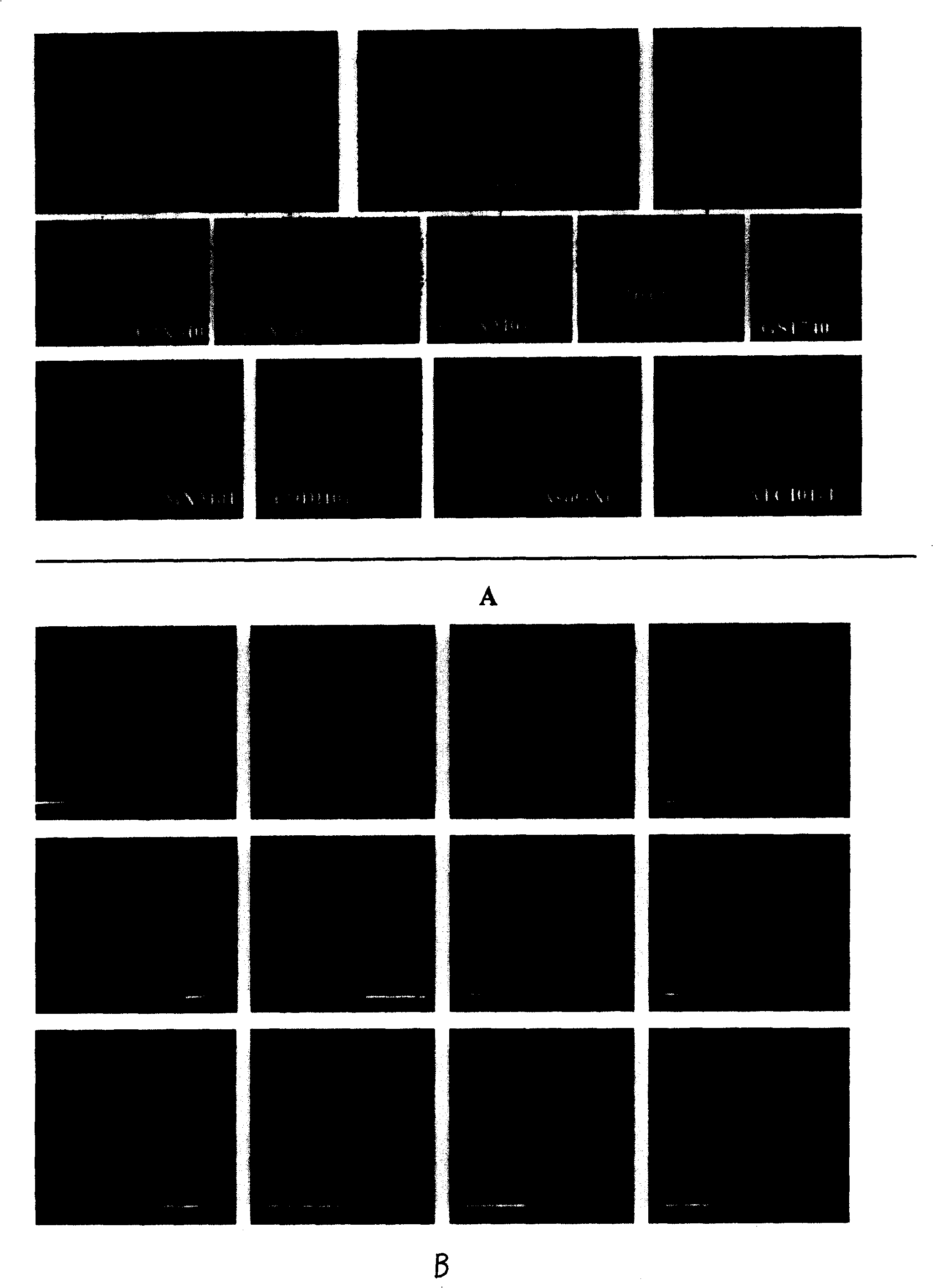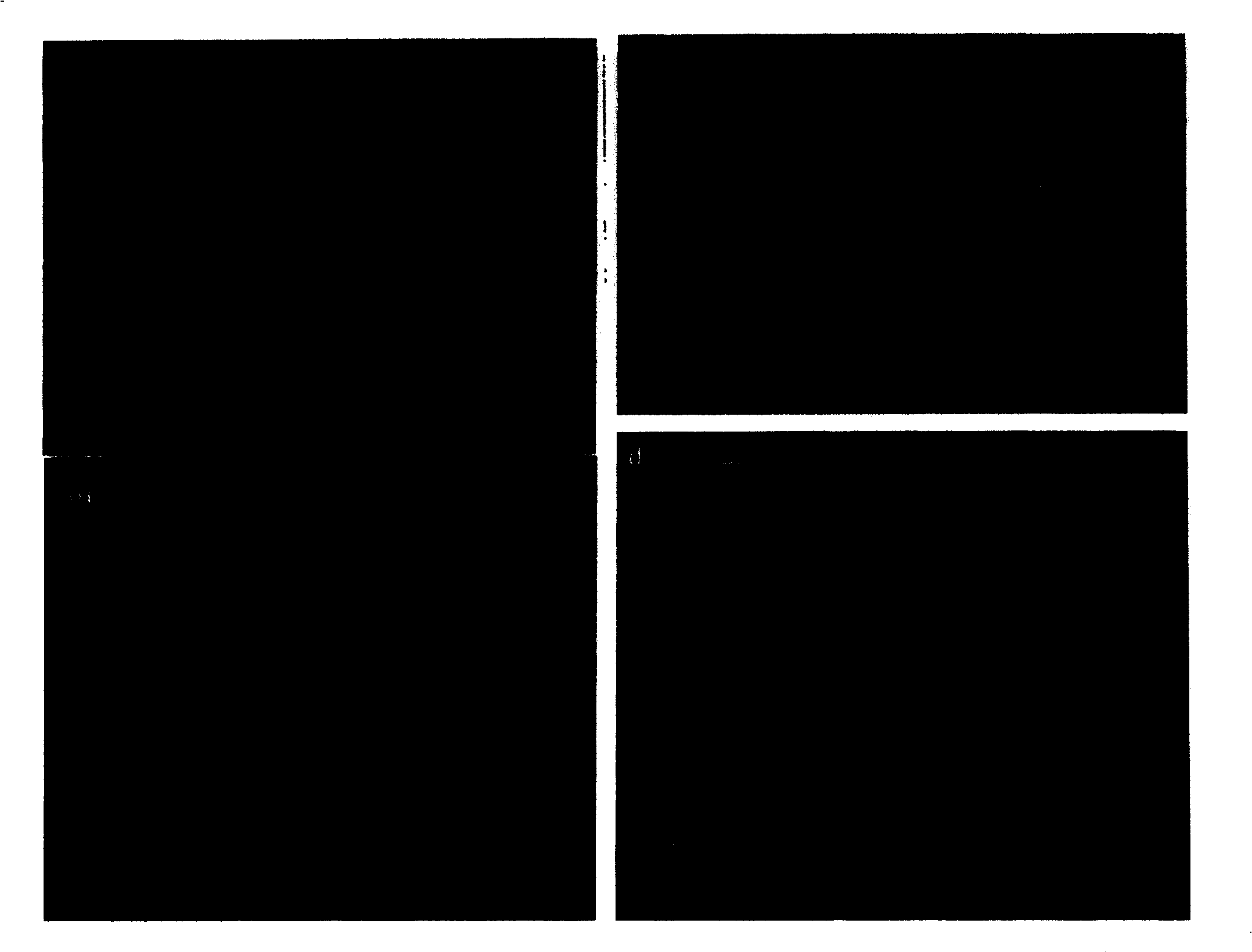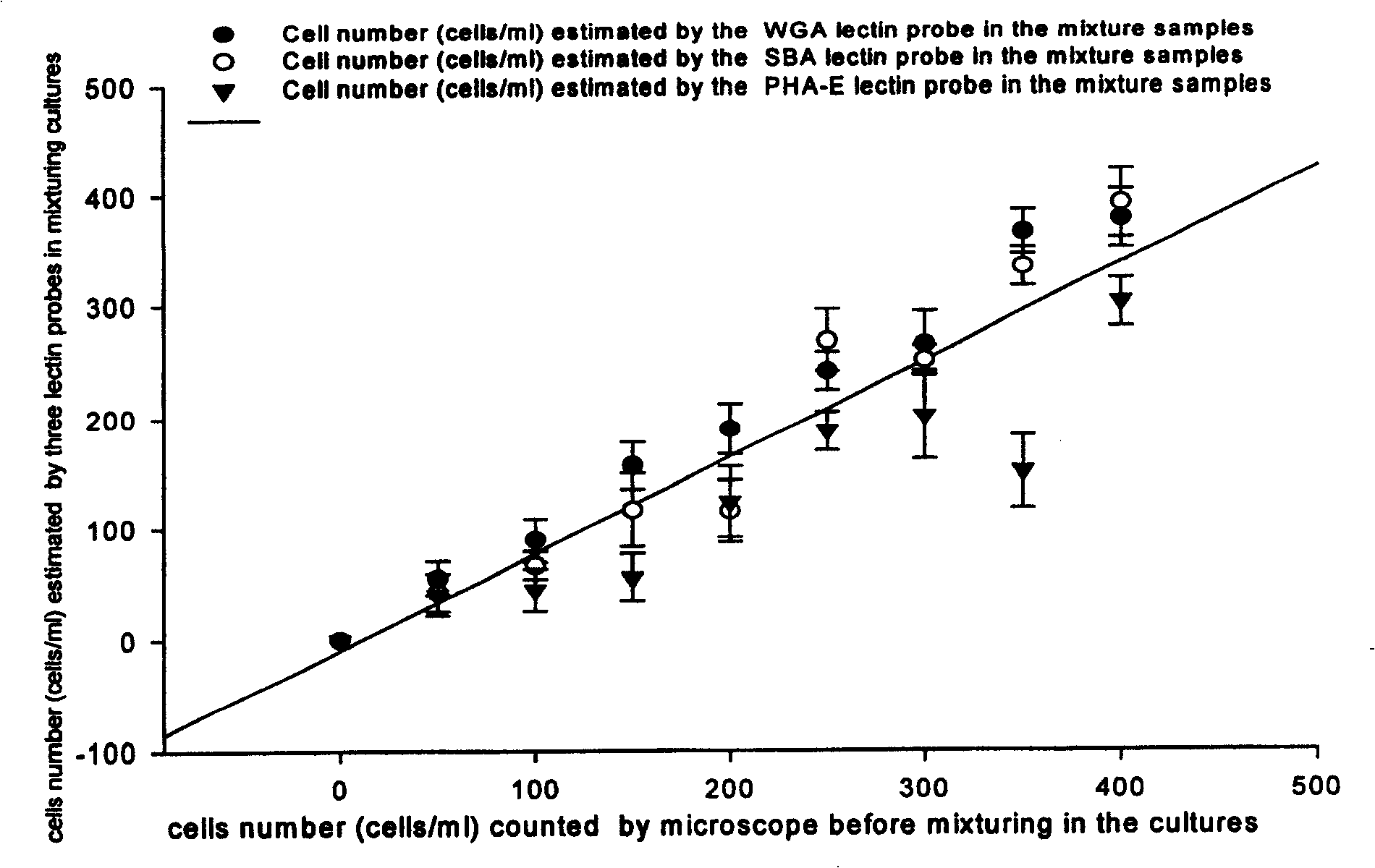Fluorescence labeled cell agglutinin probe red tide biological detection reagent kit and detecting method thereof
A technology for fluorescent labeling and biological detection, applied in biochemical equipment and methods, microbial measurement/inspection, fluorescence/phosphorescence, etc., to achieve high accuracy and reliability, low detection cost, and convenient use
- Summary
- Abstract
- Description
- Claims
- Application Information
AI Technical Summary
Problems solved by technology
Method used
Image
Examples
Embodiment 1
[0036] Fluorescence-labeled lectin probes are used to identify and detect different cell lines and morphologically similar algal cells of the same genus or species
[0037] 1. Test materials: See Table 2 for the names and sources of 14 kinds of 23 strains of cells used in the experiment.
[0038] Table 2 Algae used in the test kit and test method verification experiment and their source and separation time
[0039]
[0040] 2. Detection method:
[0041] The cultivation method of the algae used in the experiment: the algae used in the experiment is separated from the red tide water sample in the sea area of China, and the f / 2 medium is prepared after filtering the seawater with a filter membrane of 0.2 μm, under the light intensity of 5000LX, L:D=12 : The photoperiod of 12 and the temperature of 22°C were cultivated in the algae germplasm bank culture room of the State Key Laboratory of Offshore Marine Environmental Science, Xiamen University.
[0042] Preparation of lec...
Embodiment 2
[0061] Fluorescence-labeled lectin probe combined with fluorescence spectrophotometer for quantitative detection
[0062] One, material: with embodiment 1.
[0063] 2. Method:
[0064] 1. See Example 1 for methods such as cell staining and fixation and lectin probe binding.
[0065] 2. Quantitative determination of the binding of the lectin probe to the sample is detected by a spectrofluorometer (490nm excitation light and 515nm scattered light), and each sample is read twice to calculate the average value. In each case, the cell density after three centrifugation washes was controlled at 10 5 ±10 3 . No need to counterstain with DAPI. In both quantitative and qualitative assays, the cell density in f / 2 medium was 10 5 ±10 3 The cells without lectin were used as control. Each sample was measured 4 to 6 times in parallel, and then statistically analyzed.
[0066] 3. Results
[0067] Fluorescence spectrophotometer can be used to quantitatively measure the binding activ...
Embodiment 3
[0079] Quantitative and qualitative detection of fluorescently labeled lectin probes combined with flow cytometry
[0080] One, material: with embodiment 1.
[0081] 2. Method:
[0082] The algae liquid grown for 7 days was taken at a concentration of 100,000 cells / L, and fixed with 1% paraformaldehyde at 4°C for 1 hour.
[0083] Take about 10ml of algae liquid and centrifuge at 3000g / 10min, and transfer the precipitated algae cells to a 1.5ml centrifuge tube.
[0084] Decolorization: wash and centrifuge twice with salt-ethanol solution (70:30, v / v), 7500g / 2min, and filter once with a 30μm sieve.
[0085] The precipitate was treated with lectin at 100 μg / ml for 1 h at 20°C in the dark. After the reaction was finished, it was centrifuged and washed twice with filtered sterile artificial seawater (salinity 28, pH 8.0), 7500g / 2min.
[0086] Cells were resuspended in artificial seawater and analyzed by flow cytometry (Beckman Coulter Epics Altra2 model).
[0087] 3. Results ...
PUM
 Login to View More
Login to View More Abstract
Description
Claims
Application Information
 Login to View More
Login to View More - R&D
- Intellectual Property
- Life Sciences
- Materials
- Tech Scout
- Unparalleled Data Quality
- Higher Quality Content
- 60% Fewer Hallucinations
Browse by: Latest US Patents, China's latest patents, Technical Efficacy Thesaurus, Application Domain, Technology Topic, Popular Technical Reports.
© 2025 PatSnap. All rights reserved.Legal|Privacy policy|Modern Slavery Act Transparency Statement|Sitemap|About US| Contact US: help@patsnap.com



